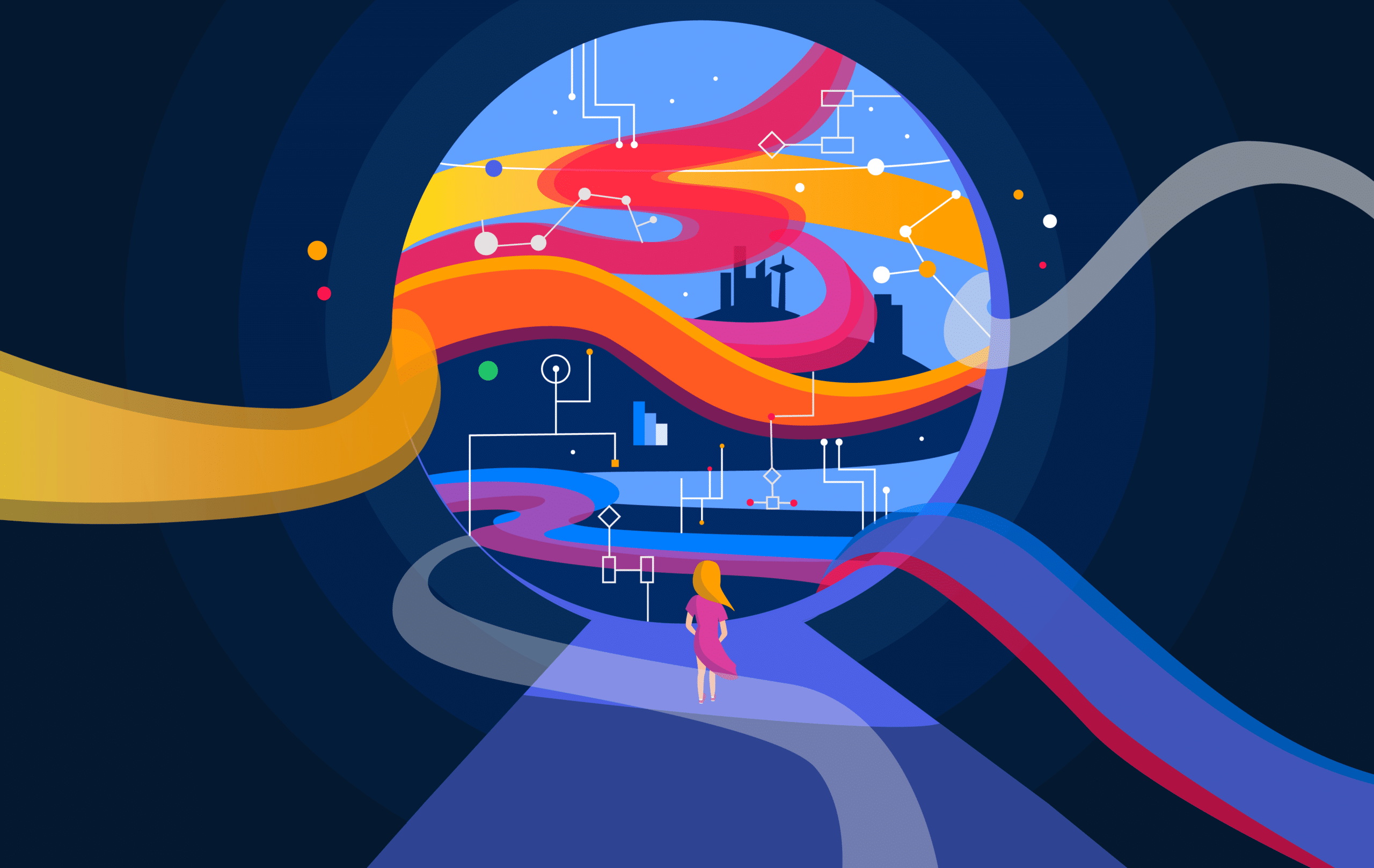Just like when microwaves became commercially available, myths and misconceptions about artificial intelligence (AI) and machine learning (ML) have begun to pop-up.
Only instead of concerns about radiation-tainted food, water cooler gossip around AI often focuses on the effects of automation. That is, how machines will impact job growth and stability.
If this sounds remotely familiar, we’ve got good news for your org!
AI systems are positively impacting job creation (just ask our team of 60+ superstars), and this sector of tech is still in its infancy. In the United States alone, AI employs over 2 million highly-skilled, well-paid workers. And, that number is expected to increase significantly over time.
But the good news doesn’t end with AI-powered job creation. For existing roles in every industry, emerging software solutions are making jobs easier and more enjoyable, as well as enabling better work/life balance.
Back to your regularly scheduled revolution.
When discussing the future of work, it’s critical to remember that this isn’t our first rodeo, so to speak. As a species, human beings have adapted to societal revolutions for thousands of years.
While the exact start of each revolution can be debated, we’ll list them according to when it’s widely agreed they began:
- Agricultural Revolution – 10,000 B.C.
- Industrial Revolution – 1760 A.D.
- Second Industrial Revolution – 1870 A.D.
- Third Industrial (Digital) Revolution – 1969 A.D.
- Fourth Industrial (AI) Revolution – Present day
With each substantial adoption of tech, professions change accordingly. Whether it’s Henry Ford’s need for production line employees, Steve Jobs’s mass-hiring of programmers, or AI’s demand for skilled developers and architects, each wave appears to be more fruitful than the last in terms of opportunity.
Robotic reinforcements for every industry.
Amazon, Facebook, and Disney have made headlines by deploying AI to improve customer experience (CX), automate repetitive tasks, and increase productivity. While these B2C use cases are fascinating, they highlight an important concept about the future of work: AI and machine learning are best used to augment human effort, not replace it.
In a recent interview, Amazon’s chief technologist said the following:
“The efficiencies we gain from our associates and robotics working together harmoniously—what I like to call a symphony of humans and machines working together—allows us to pass along a lower cost to our customer.”
While most of the jobs created by AI and machine learning will be on the upper end of the pay scale and require some technical knowledge, Amazon is a prime (see what we did there) example of how AI can be deployed across every level of the industry.
Tangible tech:
BMW plant managers recently integrated industrial robots with its human workforce, as opposed to having the two operating independently. According to the report, BMW saw an 85% increase in productivity by implementing robots in a collaborative capacity.
Rescued from repetitive tasks.
Human creativity isn’t just a quirk that enables kids to make finger paintings, it’s been essential to our evolution as a species. In fact, some experts say that regular creative expression is essential to our long-term happiness. One more reason to be glad AI is here!
If you’re not making the connection between creativity and automation, we’ll elaborate. You see, AI-powered software like robotic process automation (RPA) is eliminating the mundane and repetitive activities from our workflows.
With mundane tasks automated, talented teams are liberated to focus on higher ROI tasks that call for emotional intelligence and imagination. Whether you’re a veteran or a recent grad, this means more freedom to do meaningful work than ever before.
And for highly-regulated industries, RPA might feel like a miracle. Deploying a bot completely eliminates compliance concerns for the most repetitive activities. Not only can teams rest assured that the rules are perfectly followed, they can spend their time doing more enjoyable work.
Tangible tech:
Accounting, an industry with a vested interest in regulatory compliance, is seeing massive returns from RPA. By automating accounts payable processes with a bot, some firms are seeing a 60% reduction in vendor invoice processing cycle times.
Not only does this expedite important yet repetitive tasks within a workflow, but it ensures perfect compliance every time.
An AI-empowered workforce.
In reality, the future of work is a fantastic place to be. As AI and ML become ubiquitous with modern offices, teams can enjoy more creative, engaging work. In many cases, the kind of work they were hired to do in the first place!
And though these technologies will call for some retraining and reskilling for select positions, that often correlates with higher pay, improved benefits, and new titles.


